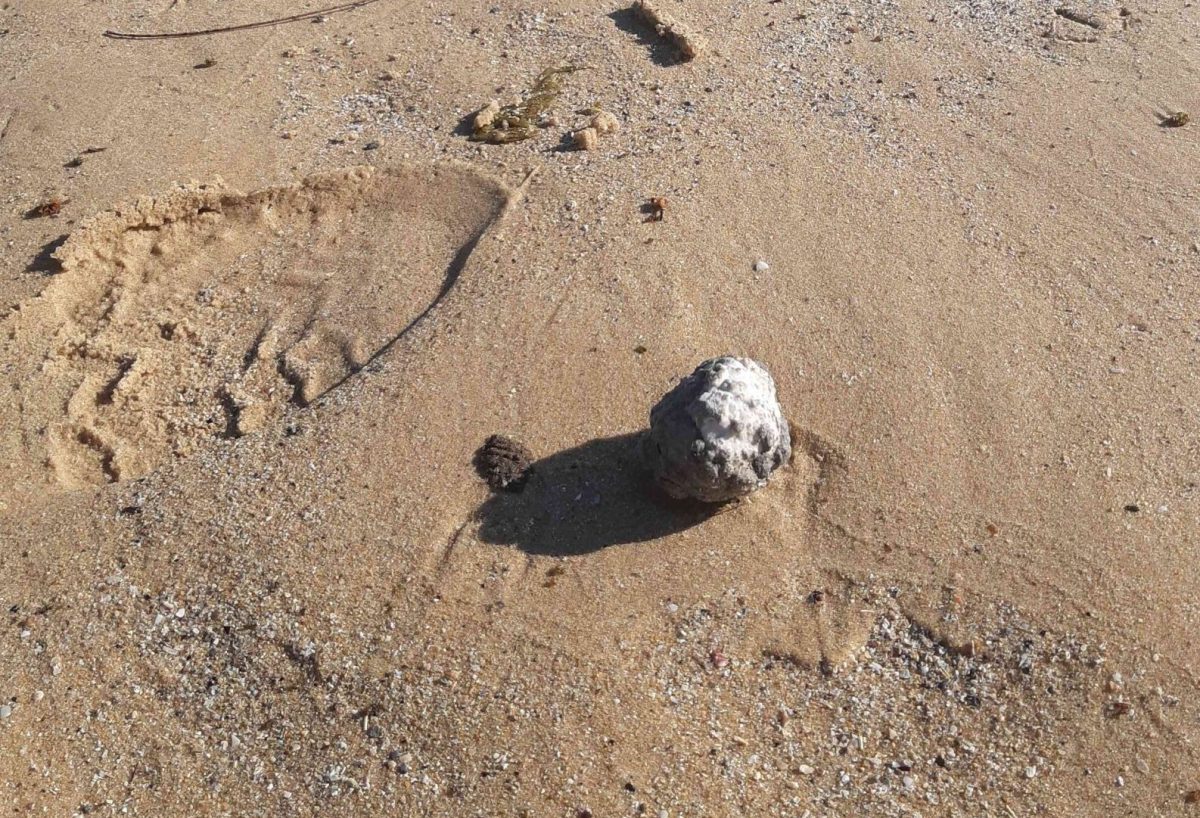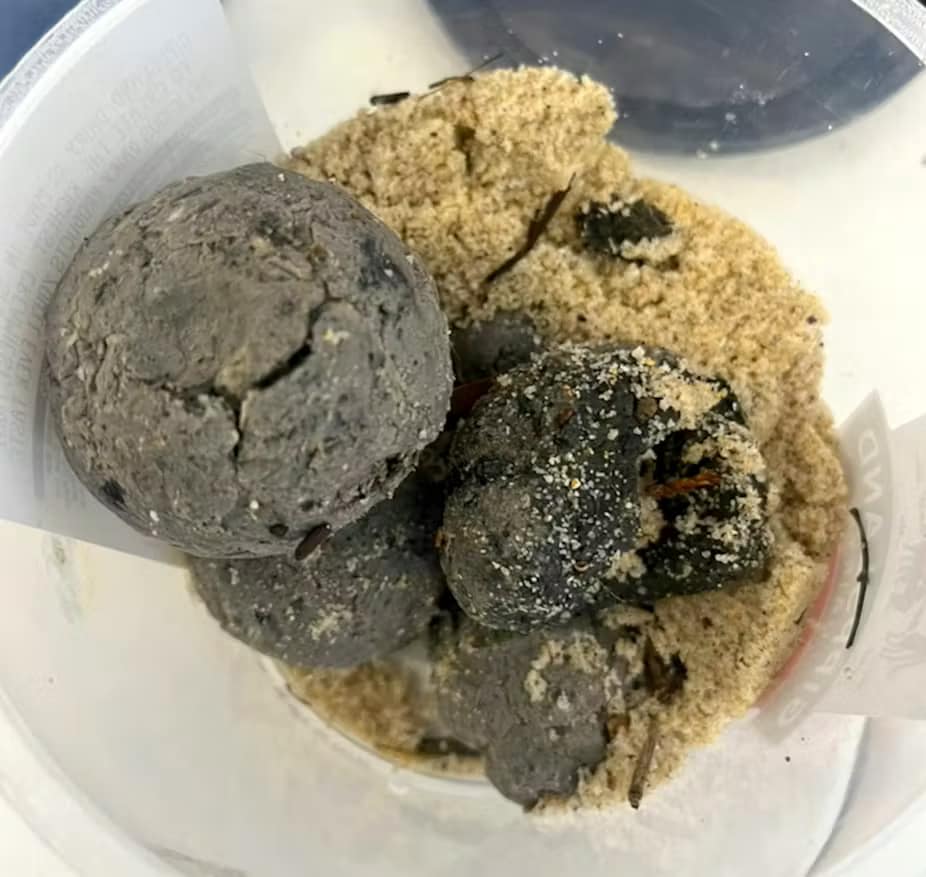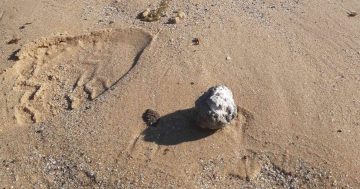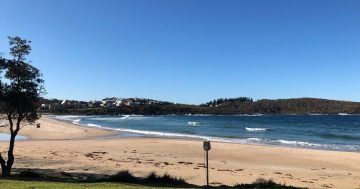
One of the waste balls that washed up at 1080 Beach, near Mystery Bay. Photo: Eurobodalla Shire Council.
The debris balls that mysteriously turned up on Far South Coast beaches late last year likely came from Sydney’s sewage treatment network.
In December 2024, the balls were found on 1080 and Pooles Beaches at Mystery Bay, south of Narooma, and at Dalmeny’s Kianga and Yabbara beaches.
Around 15 kgs of them were removed from Mystery Bay, while less than 20 balls were found at Dalmeny.
The following month, the NSW Environment Protection Authority (EPA) said it had not received any more reports of the balls washing up on the Far South Coast.
The EPA investigated the source of the debris balls, which had also washed up in Sydney beaches, then on Friday (4 April) announced they likely originated from Sydney Water’s land-based sewage treatment network.
“The development comes after a comprehensive scientific and technical investigation found similarities between the make-up of the debris balls and samples taken from several of Sydney Water’s major wastewater treatment plants, including those at Malabar and Bondi,” an EPA spokesperson said.
EPA director of operations Adam Gilligan said the EPA had issued an investigation notice to Sydney Water to pinpoint the precise source or sources of the debris balls within its network.
“While we are yet to determine exactly what caused the pollution incidents to occur when they did, we can say the composition and the characteristics of the debris balls are consistent with a land-based sewage source,” he said.

A picture of some of the debris balls a social media user reportedly found at 1080 Beach. Photo: Facebook.
A spokesperson from Sydney Water said the initial findings of the investigation indicated the source of the debris balls was probably its network or facilities, despite the system having no operating issues.
“It is important to note, all coastal treatment facilities are operating normally, and we are compliant with regulatory standards,” Sydney Water’s acting executive general manager of water and environment services, Louise Beer, said.
“As we could not find any faults with our system, we conducted widespread sampling and analysis of the debris balls at Sydney Water’s laboratories and appointed an independent oceanographer to determine the potential geographic origin of the debris balls.”
The Sydney Water spokesperson said its investigation indicated the debris balls might have formed due to an increased load of fats, oils, and greases in the wastewater system over time, with unique oceanographic factors and weather conditions playing a role in how the balls came to wash up on the beaches.
“The landings are likely the result of 10 – or more – separate discharge events from multiple locations,” they said.
“Since no single origin point has been identified, investigations will continue into what other conditions may have contributed to the occurrence of the debris balls.”
The debris balls first appeared in Sydney’s beaches in October 2024.
The EPA previously found they contained fatty acids and petroleum hydrocarbons, and organic and inorganic materials.
It is investigating the potential connections between the incidents in Sydney and the South Coast.









